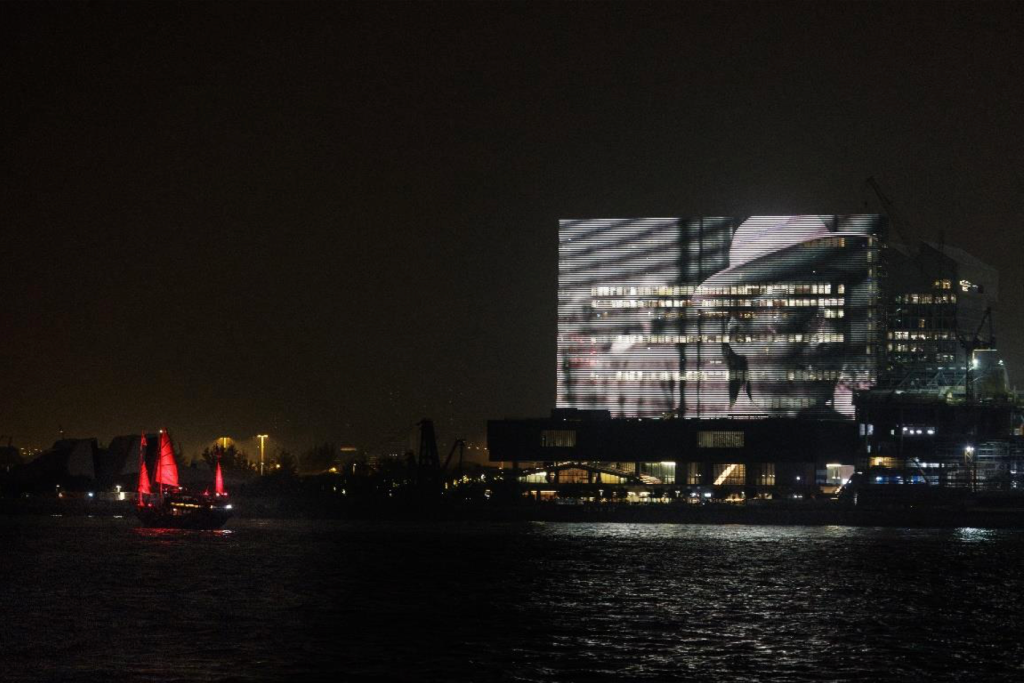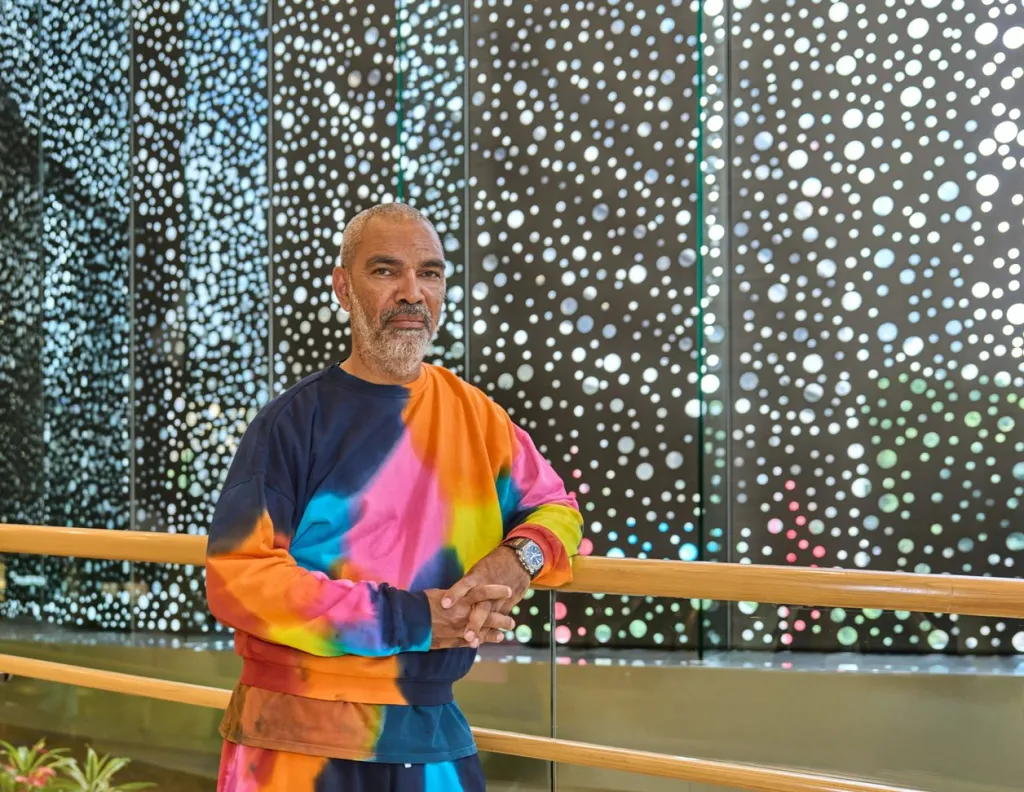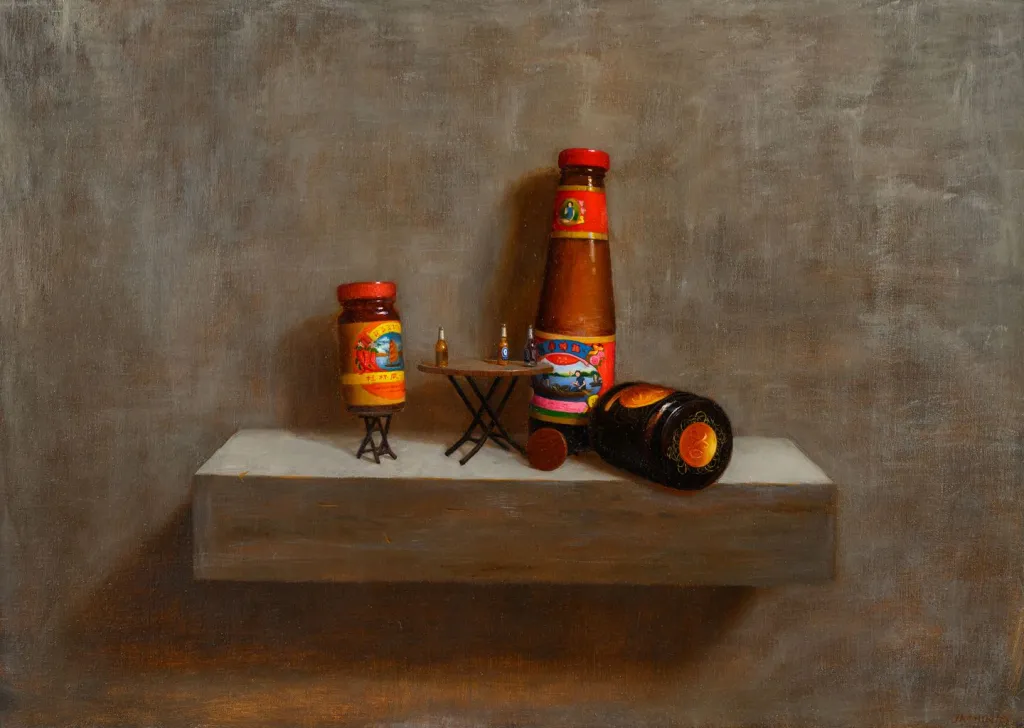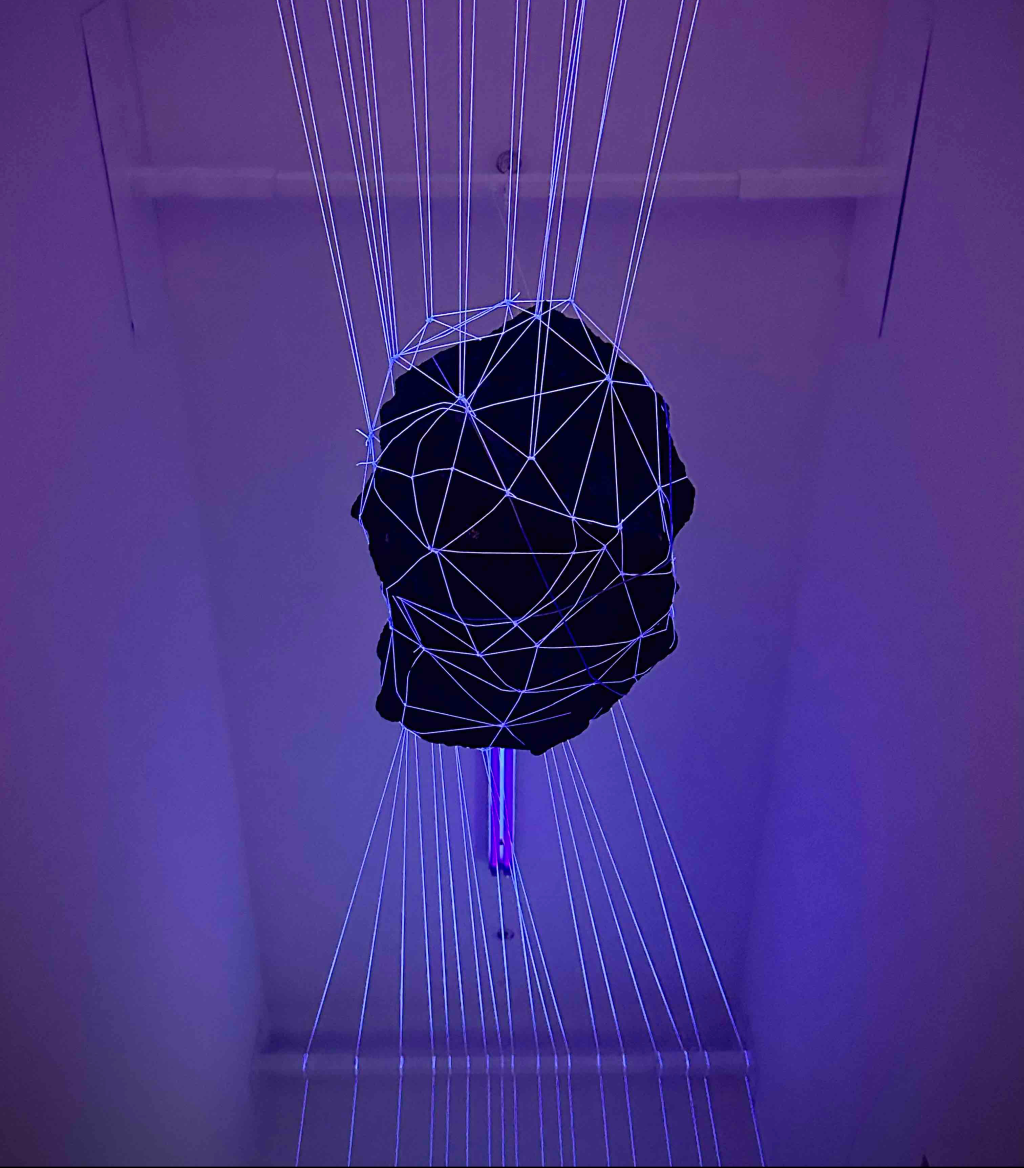Published in Asia Tatler, August 2013

It’s back, that biannual migration of mega-yachts to the world’s loveliest decaying and sinking city. Curators, critics, collectors and artists assembled from around the world for the preview week of the 55th Venice Biennale. Dubbed the Saint Tropez of the art world by some for all the glitz, glam, big money and big egos on display (to say nothing of the planet sized dinghies moored in front of the main venues), this year’s unseasonably cold, dark and rainy weather saw nary a fake tanned limb in sight. The city, usually bathed in splendid light every summer, had not quite the atmosphere for crisp white linens on water taxis. Instead, art lovers hopped over St Marco’s puddles and rising water and trudged pavilion to pavilion huddled in winter coats and under umbrellas.
The biennale, now in its 55th edition, is this year made up of 88 participating countries, and almost 100 collateral events. Debate rages over the relevance of an art event still organized according to national pavilions. Many see it as a simplistic, reductive and outdated format in an increasingly global world where jetsetting artists, curators and collectors take on many national identities. Yet, this year has seen the inclusion of even more participants,including the Bahamas, Kosovo, Kuwait, Bahrain, Ivory Coast, and the Vatican.


Unlike art fairs where galleries and dealers reign supreme and commerce is king, the biennale technically isn’t a selling even. Instead, one section of the event is dedicated to national pavilions, each presenting the exhibition of a selected artist (or artists). The biennale’s main exhibition this year titled ‘The Encyclopedic Palace’ is curated by 40 year old Massimiliano Gioni, who structured it according to the convention of the traditional museum concept. The exhibition is a taxonomic display of visual history with an esoteric wunderkammer feel to it, and historical breadth spanning back to the 19th century.
With the works of over 150 international artists, the exhibition is intended as an exploration of the quest for knowledge, an encyclopedia of human imagination. Gioni defied expectation by expanding on the traditional canon of art history and including the works of less conventional and ‘outsider’ artists such as Morton Bartlett, Rudolf Steiner, Aleister Crowley, Frieda Harris and Swedish artist Hilma af Klint, whose mystical and spiritually derived paintings and drawings were amongst the first abstract art. A collection of photographic albums from Cindy Sherman are laid out like a cabinet of curiosities along with erotic works (just to make sure you’re paying attention) by Carol Rama, Pierre Molinier and Hans Bellmer.




Over at the Giardini, Venice’s gardens that have been traditionally used as a key venue for the biennale, the Germany and France pavilion have switched spaces. The move commemorates 50 years since the two signed the Élysée Treaty of friendship. Visitors to the last biennale were faced with hours long queues that rivalled Soviet-era bread lines, and this year was the same, with a two hour wait at the French pavilion for Anri Sala‘s video works. Projected simultaneously in two rooms, including in a semi-anechoic chamber, and playing with space and sound, Sala’s ‘Ravel Ravel Unravel’ is like watching a concert up close. But, with one hour of content focusing on the choreography of the left hand of a pianist playing the keyboard, it is not for the impatient, overly caffeinated or time pressed. Fifteen minutes later we were out and faced with yet another queue in the rain for the German pavilion, but amply entertained chatting with performance artists and art world fixtures, Eva & Adele.

The German pavilion, in an effort to question the relevance of traditional forms of national representation and convey a more complex confluence of influences and identities, exhibited the work of four artists, only one of whom was actually German. Chinese dissident artist Ai Weiwei was among the participating artists with a lacklustre result- an installation of 886 three legged stools somewhat visually reminiscent of Colombian born Doris Salcedo’s “1550 Chairs Stacked Between Two City Buildings”. An off site installation of two metal boxes, drawing on Ai’s period of incarceration, proved to be more of a talking point.


Belgium seduced and haunted with its dark and beautiful installation, ‘Kreupelhout- Criplewood’, created by Berlinde de Bruyckere and curated by author JM Coetzee. In the blacked-out and darkly painted pavilion, a large gnarled, knotted and uprooted tree made of wax lay across the length of the room. Resembling muscles and tendons and forms of the human body, the limbs are scarred, wounded and bandaged. It is a fairytale metamorphosis from tree to man, (or perhaps the other way around), with deliberate echoes of Saint Sebastian (the symbol of Venice) and his arrows. It is a powerful and moving work, inducing a gloomy silence among the visitors shuffling around the installation.


The Russian pavilion was a favourite with many visitors. Recreating the ancient Greek myth of Danae, Vadim Zakharov split the pavilion space into a two-storied installation. The lower hall, reconstructed as a womb like cave, can only be visited by women, who, protected by clear plastic umbrellas, are showered with gold coins from viewers above. It is a reference not just to the seduction of Danae but an allegory of “human desire, greed and the corrupting influence of money.”
Continuing the theme of economic malaise and cynicism is Greece’s ‘History Zero’ by Stefanos Tsivopoulos, which explores the value and role of money in human relationships, with three films. The exhibition also traces the history of alternate forms of monetary exchange through an archive, questioning ‘the homogenizing power of a single currency’. Perhaps apt, considering Greece’s current troubles.

Tucked away behind the Giardini with a cluster of other ‘Balkanised’ countries, Romania presented Alexandra Pirici and Manuel Pelmus’s ‘An Immaterial Retrospective of the Venice Biennale’. In the bare white room, there are no paintings hanging on the wall, no sculptures standing in the middle of the space. Instead, visitors are presented with a group of young dancers who bring to life and reproduce through movement and stasis, the history of the biennale with 100 staged works. The dancers chant, shout slogans, separate and regroup to create tableaus of an almost absurdist nature.

Film and sound installations seemed a prominent feature this year, with Argentina, the United Arab Emirates, Denmark, and Israel showing work that often blurred the lines between fictional and real spaces, past and present, artifice and reality. “It’s the first time that music and sound has been considered seriously as an artistic practice”, says Stephane Ackermann, artistic director of Istanbul Art International.

There’s certainly an overwhelming amount of art to see at this Art Olympics. But considering that will continue until 24th November, there’s plenty of time yet to catch the biennale and Venice in all its sun dappled beauty, and then reward yourself with a few Bellinis for getting through it all.







And what biennale rundown would be complete without the inclusion of a few fabulous pics of the beautiful city itself, its palazzi, parties and people?


















Leave a comment